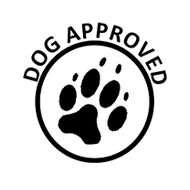My Dog Is Aggressive While On A Leash
I have a 4 year-old giant German Shepherd cross who is a sweetheart to everyone and everything. Toddlers can play with him all day and one of his best friends is a bulldog. He has never showed aggression before to anything... until recently he has been very aggressive to other dogs on a leash. He used to bark once in awhile but now he is actually becoming frightening to the point I no longer walk with him in places I know we'll see other dogs. I have done some reading and most people say that he is feeding off our anxiety and just walk him more but it's kinda hard when he looks like this big black beast and weighs the same as me so he is kind of hard to control when he decides to act like that. I don't like scaring people. What can I do??
Answer: Thank you for your excellent question! You're not alone in experiencing leash issues with an otherwise calm and gentle companion. This response to your question will benefit many other caregivers, I'm sure.
Here are some suggestions to get you started.
1. Change the environment
It's important to keep in mind that your dog's behaviour is directly related what is happening in the environment. Some adjustments to your surroundings (e.g. where you walk, distance from other dogs) can go a long way to helping your dog cope. You're on the right track by avoiding places where you will see other dogs. This doesn't mean you won't be able to walk in your own neighbourhood again, but part of the training will require managing his walks on leash so it isn't stressful for you and your dog. Ideally, your dog will not have an opportunity to rehearse the behaviour. Also, safety is key!
2. Use comfortable and safe equipment
Pressure on the neck can quickly worsen reactive behaviour. A harness, with 2 points of contact, will distribute the impact if your dog does pull, or if you need to move him away in an emergency situation. There are several brands, but I've had the most success with these harnesses:
- TTouch Harmony Harness - available through TTouch Canada in Vernon (http://www.tteam-ttouch.ca/shop/index.php?categoryID=88)
- Freedom Harness
- Blue 9 Balance Harness
Your leash should have a clip on each end.
3. Understand emotions
It's true that dogs quickly pick up on emotions, as well as sensory feedback such as tightening the leash. Having said that, nobody has ever relaxed just because someone told them to relax. :) Taking your dog to areas where he can sniff and explore without worrying about the sudden appearance of a dog will help you as well your dog. If there is a situation, try to remain as neutral as possible (breathe!). You want your dog to think you're in this together and you're there to help. It's also common for caregivers to feel embarrassed about their dog's behaviour. Just remember, this is not an obedience issue or a reflection on your abilities; your dog is just having a hard time. It's sort of like how you would feel if the ground started to shift under your feet. Your behaviour might be a little wild in that moment, right?
4. Develop a plan
There are 2 main steps to helping your dog feel more comfortable in the presence of other dogs. First is to build a positive association with the appearance of a dog. This is done gradually, and allowing plenty of distance so your dog is able to take in information about his surroundings without feeling threatened. Second is to teach him to choose new behaviours -- what to do instead of barking and lunging. A big part of this process is to always have reasonable goals for your dog. Expecting too much too soon will result in a set back.
Developing and implementing a plan takes time and expertise. Your best bet is to work with a positive dog trainer. I would be happy to help you further, or to put you in touch with a trainer in your area who understands this process (caution: not all do!).
For in-person help, sign up for our Dog Training Services!












 Contact Form
Contact Form